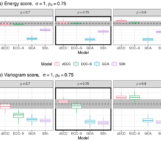
In the last few years it has become a common practice to compensate carbon dioxide (CO2) emissions by planting trees. This idea is simple and rooted on a very basic principle: trees get the energy of sunlight, and by photosynthesis they take water from the ground and CO2 from the air, releasing oxygen in the atmosphere. The CO2 is then stored in trees and surrounding soil. Tree planting efforts are indeed well intentioned and can have potential benefits besides that of removing CO2, namely preserving biodiversity, improving water quality, shading urban areas. The easiness of the C02 removal mechanism and the psychological connection between growing trees and taking care of the environment have made this climate change mitigation solution widespread: not only air-companies, food or hotel companies but also governmental agencies promote the practice of planting trees to compensate carbon emissions.
Can we apply this practice at planetary scale to mitigate climate change? In a recent perspective on Science, Holl and Brancalion have given a few reasons why planting trees must be done with care to achieve desired outcomes. Once again side-effects are linked to retroactions and non-linearities present in the climate system. As a first example, some of these programs use non-native tree species. Their massive implantation can lead to disruptions of local species and perturb the ecosystem in an uncontrollable cascade of effects potentially harming on-site animals and even human activities. In the report, the authors claim that “large-scale tree planting in the semiarid Loess Plateau in central China has reduced river runoff and in turn the amount of water available for local activities”. In another study, Friedlingstein and colleagues show that planted forests alter complex biophysical feedbacks: they can modify the albedo (i.e. the reflection properties of the surface) as well as evapotranspiration, and counteract the cooling effect from CO2 uptake. As an example, reforestation of snow-covered regions may lead to local warming, as forests can reflect solar radiation less efficiently than snow, offsetting the negative radiative forcing from carbon sequestration. Moreover, a further source of uncertainty is the climate change feedback on the planted forests: increasing drought and temperatures can lead to substantial tree mortality either directly or indirectly through feedback loops involving fire and insect outbreaks.
The CO2 compensation introduced by these does not appear as a long-term stable solution to climate change. Even following the most optimistic studies (see, e.g. Bastin and collaborators), planting trees could only offset about 20 years of current emissions. Planting trees, used wisely, should necessarily be accompanied by a reduction in greenhouse gases emissions via energy efficiency and deployment of non-fossil energy sources. Only this synergy will help to meet the ambitious targets of the 2016 Paris Climate Agreement.




